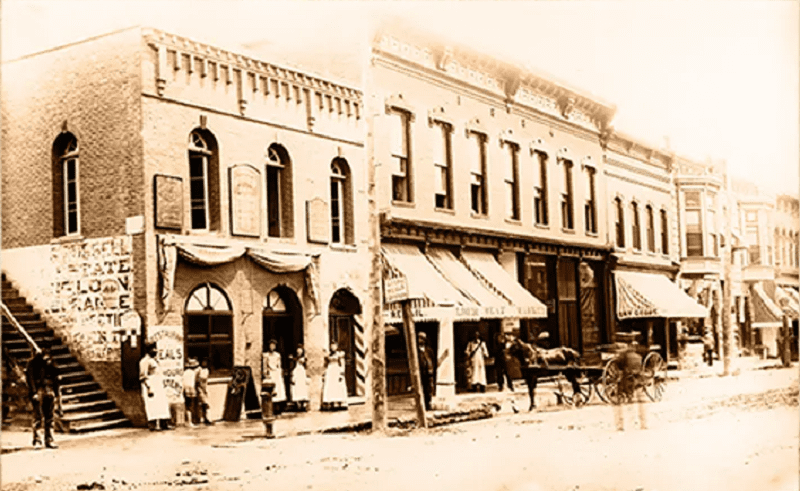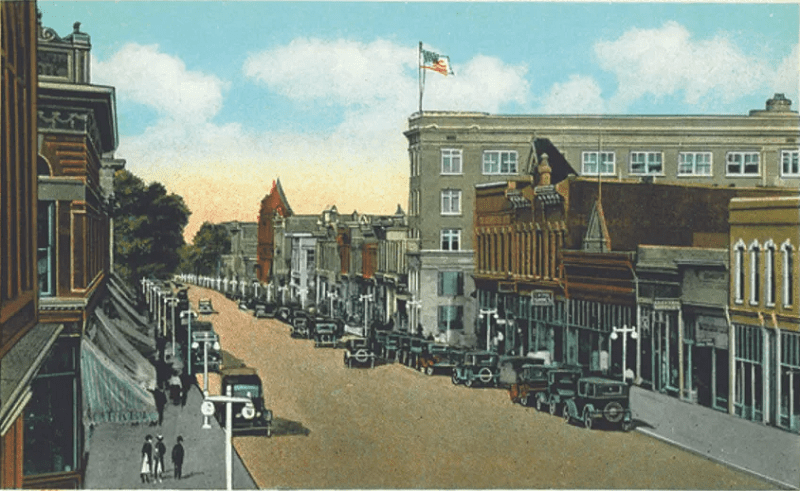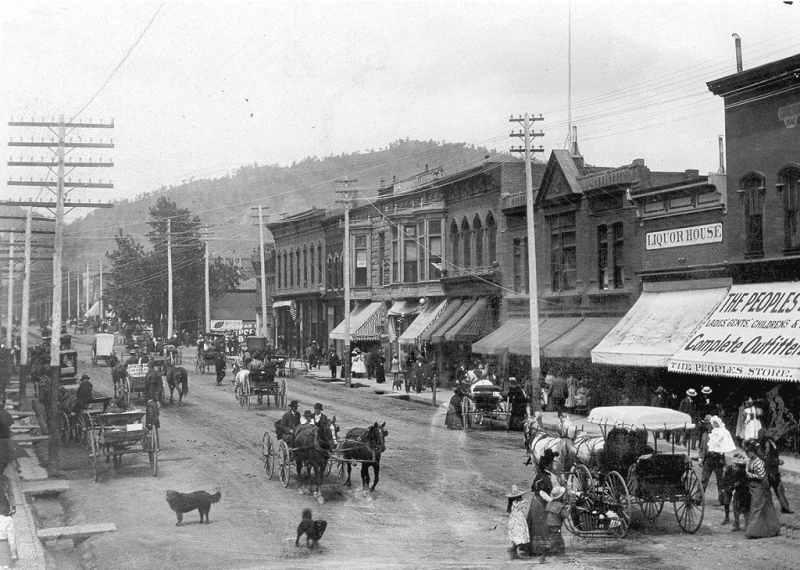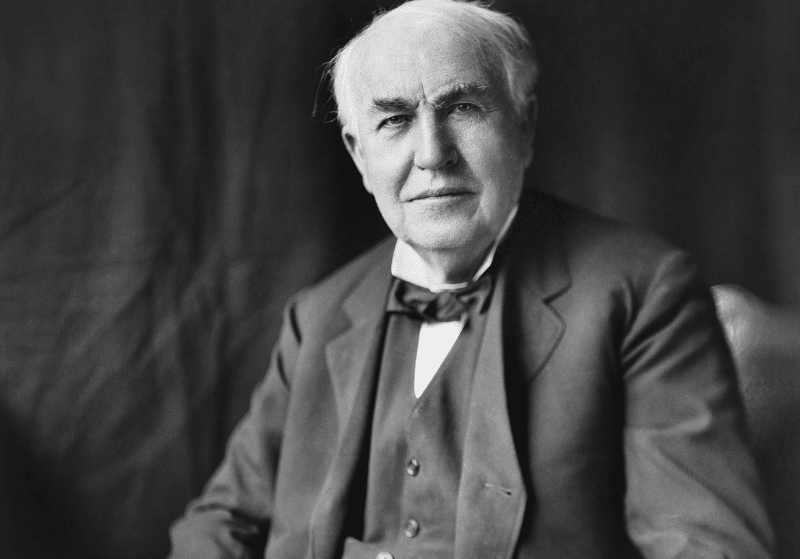Pearl St is one of the many streets in Manhattan, which is in the Financial District of the lower part of the city. It stretches all the way to northeastern Manhattan from Battery Park, crosses Fulton St and eventually ends at the Brooklyn Bridge, which is nearby. Read more on manhattan-future.
After intersecting with Fulton St, the western line of Pearl St shifts one block south and then turns and ends at Manhattan’s Central St. The street got its “Pearl” name from the large Lenape shell middens, which were in the southern part of Pearl St. The name also comes from the famous landings of Lenape canoes.
The first mention of Pearl St dates back to the 17th century
The history of colonial life in Manhattan’s Pearl St dates back to the 1600s. The first walkway on what is now Pearl St appeared in 1633, and it was laid entirely of cowhide. It stretched across a coastal area called the Strand. The name of this beach is derived from the Dutch name Parelstraat, which appeared around the 1660s.
The famous plan by Castello also depicted Pearl St. One of his works was a plan of the eastern bank of New Amsterdam. It was next to the Schreyers Hook Dock (cf. Amsterdam’s Schreierstoren), which in turn was built in the 1640s near the Broad Canal. The latter served as a marina in the city. It was named after the large number of oysters found in the river. Back in the colonial period, the street was known as Great Queen St. Interestingly, there was a similar street in the city at that time, Little Queen St, which only became Cedar St in 1784.

[Photo source: https://boulderdowntown.com/]
Pearl St is rather uneven because it ran along the former eastern shoreline of lower Manhattan until early in the second half of the 18th century. During that time period, perennial dumpsites extended 700-900 feet (or 200-300 meters) along the coastal area, later spreading to other streets such as Water St and Front St.
The first buildings on Pearl St
The first church on the Colonial St was built in 1633, when Wouter van Twiller, the director of the Manhattan borough, lived nearby at 39 Pearl St. In 1652, construction began on a wooden defensive wall in the northern part of Pearl St, whose function was to protect against a possible attack by English troops. At that time, two types of gates were built: a land wall on the Heerestraat and a water wall on Pearl St. In the 1650s, a three-story tavern was built at 73 Pearl St, which is nowadays at the same address. It became the first city hall in Manhattan.
It is worth noting that many famous people lived on this street. One of them was the printer William Bradford, who lived at 81 Pearl St. In 1693, he founded one of the first printing houses at that time. Another of these men was Walton, whose mansion was located at 326 Pearl St. His four-story house was built in 1752, before the Revolution. It became known throughout the city for holding extravagant parties inside.
Another famous personality whose buildings are on Pearl St is Alexander Hamilton. He and other colleagues founded the Bank of New York here in 1784. The offices of this bank were, among other places, on Pearl St, namely in an old mansion. Three years later, the offices of the Bank of New York moved to Hanover Square.

[Photo source: https://boulderdowntown.com/]
In 1819, H. Melville was born at 6 Pearl St. Here he opened his own account house at No. 211 in 1831. Unfortunately, four years later, he suffered from a fire that broke out nearby at the intersection of Pearl and Merchant Sts due to a damaged gas pipe. The result of this accident was the destruction of more than 600 buildings in 17 Manhattan neighborhoods, with buildings on Pearl St, Wall St and the Coenties Slip burning…
Important objects that were on Pearl St
In 1833, the famous publishing house J. & J. Harper changed its name to Harper & Brothers. It was on Pearl St at Nos. 329 and 331, near Franklin Square. The publishing house had been publishing Harper’s New Monthly Magazine since 1850. In the winter of 1853, a fire completely destroyed the building on Pearl St. After that, the brothers decided to build a new building of cast iron material, designed by architect J. Bogardus. According to the documentation, the new building was connected to another building on Cliff St by cast-iron passages.
Although the building was demolished in 1925, the memory of its existence remains in a painting by R. Haas, which was preserved in the DeWitt Wallace Periodical Room in the main branch of the New York Public Library. A similar company, HarperCollins, still exists today, at 195 Broadway.
There are also buildings on Pearl St that have architecture from distant centuries. For example, a three-story stone building in the Italian Renaissance style, at 60-64 Stone St (or 95-101 Pearl St). This building is a set of four-story brick buildings that have been preserved since the distant Greek Renaissance. The building complex itself served as a kind of headquarters for the New York Cotton Exchange in the 1870s and 1880s. In 1915, the set of brick buildings was part of the private club India House. By modern years, it was designated as a historical landmark not only in NYC, but also at the national level!

[Photo source: https://www.dailycamera.com/]
The first US power plant was on Pearl St
Pearl St was home to important infrastructure facilities that influenced the development of not only Manhattan or New York but the entire country! Thus, the first power plant of Thomas Edison, which was the first of its kind in the United States, was at 255-257 Pearl St. It also became the first direct current generator for NYC. The station began to generate electricity in 1882.
The development of Pearl St has been ongoing: not for one century, not for one year! It developed both in terms of the types of structures along the street and in general issues, such as transport interchange, communication facilities, sewerage engineering, water and electricity supply networks, telephone networks, etc. For example, between 1878 and 1950, the IRT Third Avenue railroad was in operation, but later it was decided to remove it. Members of the India House, at 1 Hanover Square, decided to build a water-themed park on Pearl St. The park was officially consecrated in November 1951.

[Photo of Thomas Edison. Photo source: https://wikimedia.org/]
In the early 1970s, New York Telephone built a large office building on 375 Pearl St, east of the Brooklyn Bridge. Here, in 1991, the Daniel Patrick Moynihan U.S. Courthouse was built at 500 Pearl St. It became the general district court for the entire Southern District of New York!
In the 20s of the XXI century, Pearl St still has a well-developed transportation infrastructure. The M15 and M15 SBS buses, as well as the M22 local buses, pass here. Express buses, such as SIM5, SIM12, SIM35, run along this street and the neighboring Madison and Fulton Sts, whose function is to serve the local population living on short segments of the street.